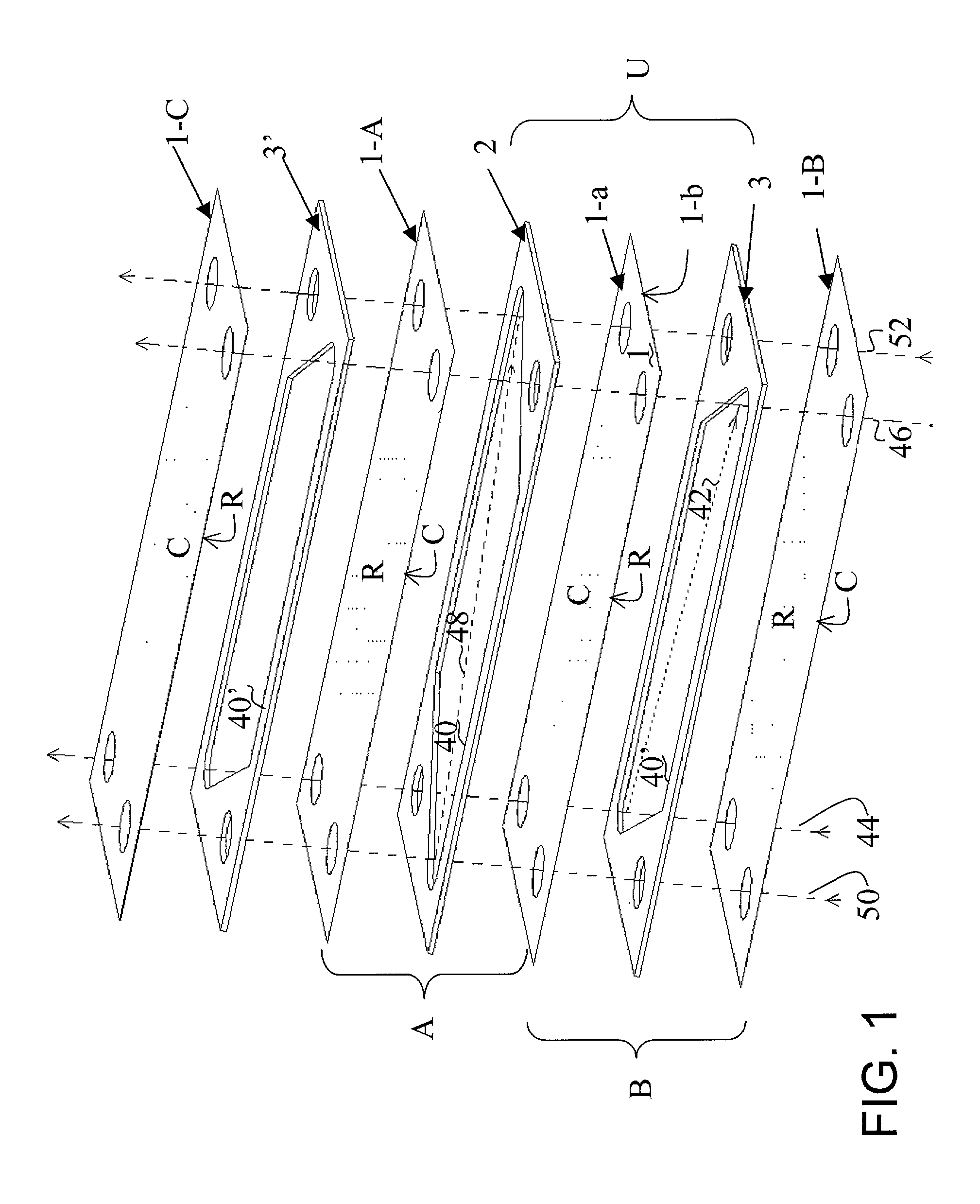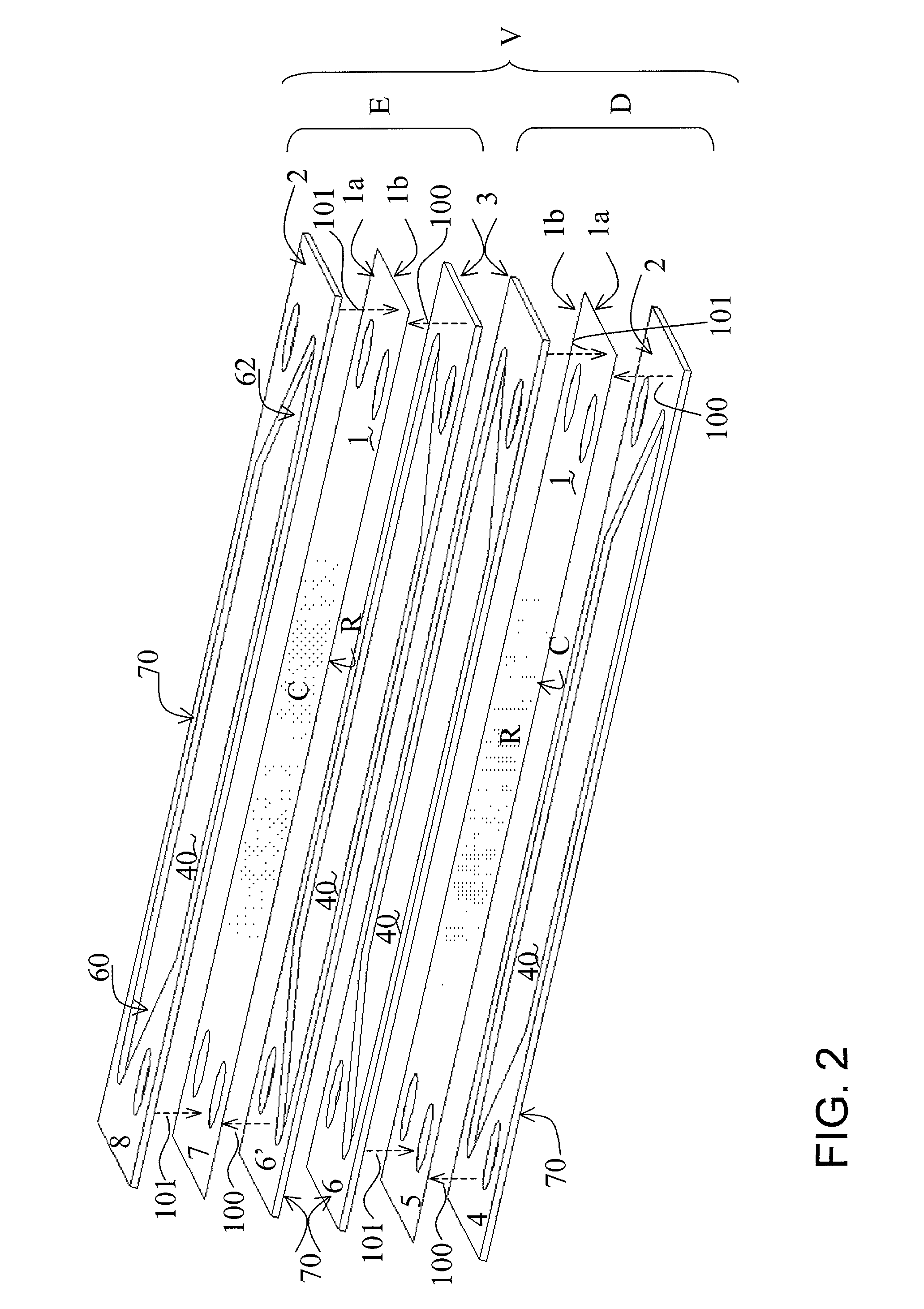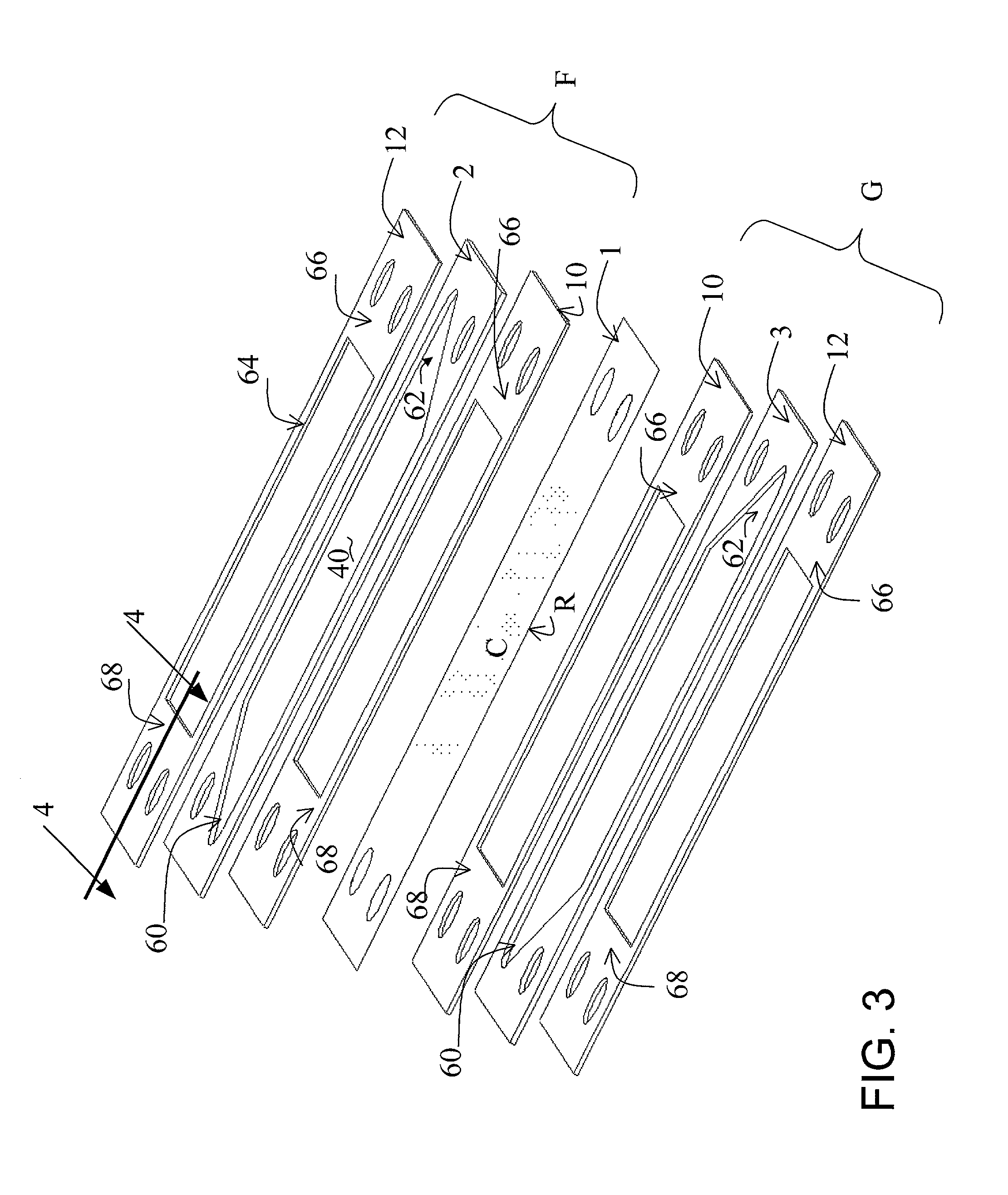Catalytic separator plate reactor and method of catalytic reforming of fuel to hydrogen
- Summary
- Abstract
- Description
- Claims
- Application Information
AI Technical Summary
Benefits of technology
Problems solved by technology
Method used
Image
Examples
example 1
[0065] Production of Separator Plates Coated with a Pd Catalyst on a Zirconia Support.
[0066] A Pd-impregnated zirconia sol was prepared following the procedure taught in U.S. Pat. No. 5,259,754, Example 1, the disclosure of which is hereby incorporated by reference. An Fe / Cr / Al metal foil was oxidized in ambient air at 900.degree. C. for ten hours to form alumina whiskers on the foil surface. The colloidal Pd / ZrO.sub.2 sol was sprayed onto both sides of the corrugated foil. The coated foil was then heat treated for ten hours in air at 700.degree. C. The final foil contained 10 mg Pd / ZrO.sub.2 / cm.sup.2 foil surface, and this dual-surface catalytic foil is used to form separator plates in a reactor design of this invention.
example 2
[0067] Reactor Operation
[0068] Two separator plates constructed of the foil prepared in accordance with the procedure of Example 1 were employed in a reactor of the design illustrated in FIG. 7 (described above) and tested. Flow-directing devices illustrated in FIG. 6 were inserted in the reforming and combustion channels. The air flow rate in the test was 100 SLPM; the fuel was natural gas supplied at a flow rate of 3 SLPM both on the combustion and reforming channels, the steam / methane molar ratio was 3.0, and the steady state preheat temperature for all inlet streams was 485.degree. C. The performance of those plates is shown in FIG. 8. Solid trace lines in this figure denote reformer zone inlet and outlet temperatures versus runtime. The Temperatures were measured in the reforming channel at the upstream and downstream edges of the catalyst coating R (see positions 60 and 62, respectively, in FIG. 6). An overlay plot shows the conversion of methane versus runtime, the diamonds r...
example 3
[0070] Production of Separator Plates Coated with a Combustion Catalyst on One Side and a Reforming Catalyst on the Opposite Side.
[0071] In this example, the combustion catalyst is a palladium catalyst on a zirconia support coated on one side of a foil separator plate as indicated in Example 1. The reforming catalyst is a rhodium catalyst on a zirconia-modified support coated on the other side of the same foil in process steps as follows: ZrO.sub.2 powder (modified by the addition of ceria and lanthana) was impregnated with a solution of RhCl.sub.3. The final Rh loading was 5 wt %. The Rh-impregnated zirconia paste was dried at 120.degree. C. overnight. It was then heat treated at 200.degree. C. for 2 hrs followed by heat treatment in ambient air at 500.degree. C. for 4 hrs. This solid material was mixed with water acidified with sulfuric acid to a pH of about 3, and ball milled in a polymer lined ball mill using a zirconia grinding media for ten hours. This colloidal Rh / ZrO.sub.2 s...
PUM
| Property | Measurement | Unit |
|---|---|---|
| Time | aaaaa | aaaaa |
| Temperature | aaaaa | aaaaa |
| Flow rate | aaaaa | aaaaa |
Abstract
Description
Claims
Application Information
 Login to view more
Login to view more - R&D Engineer
- R&D Manager
- IP Professional
- Industry Leading Data Capabilities
- Powerful AI technology
- Patent DNA Extraction
Browse by: Latest US Patents, China's latest patents, Technical Efficacy Thesaurus, Application Domain, Technology Topic.
© 2024 PatSnap. All rights reserved.Legal|Privacy policy|Modern Slavery Act Transparency Statement|Sitemap



